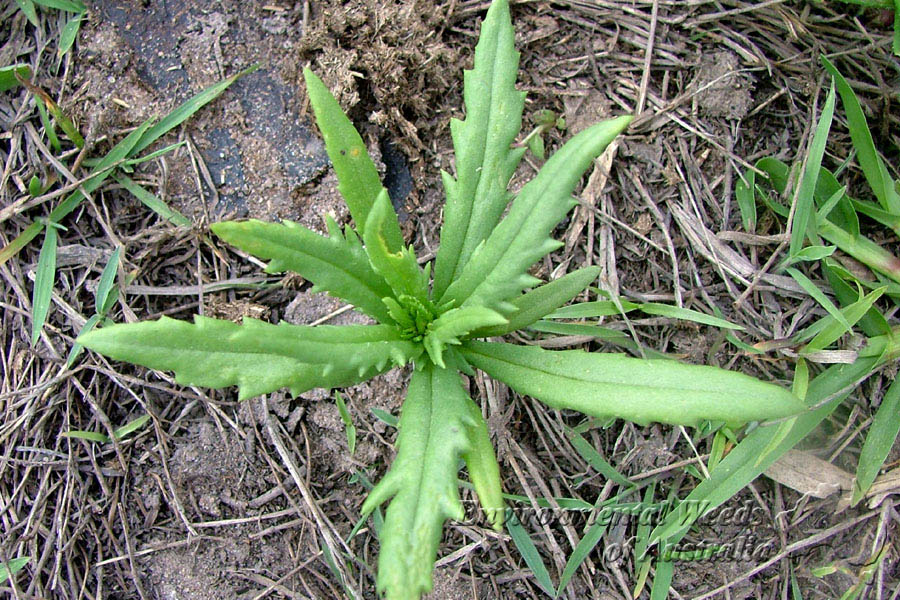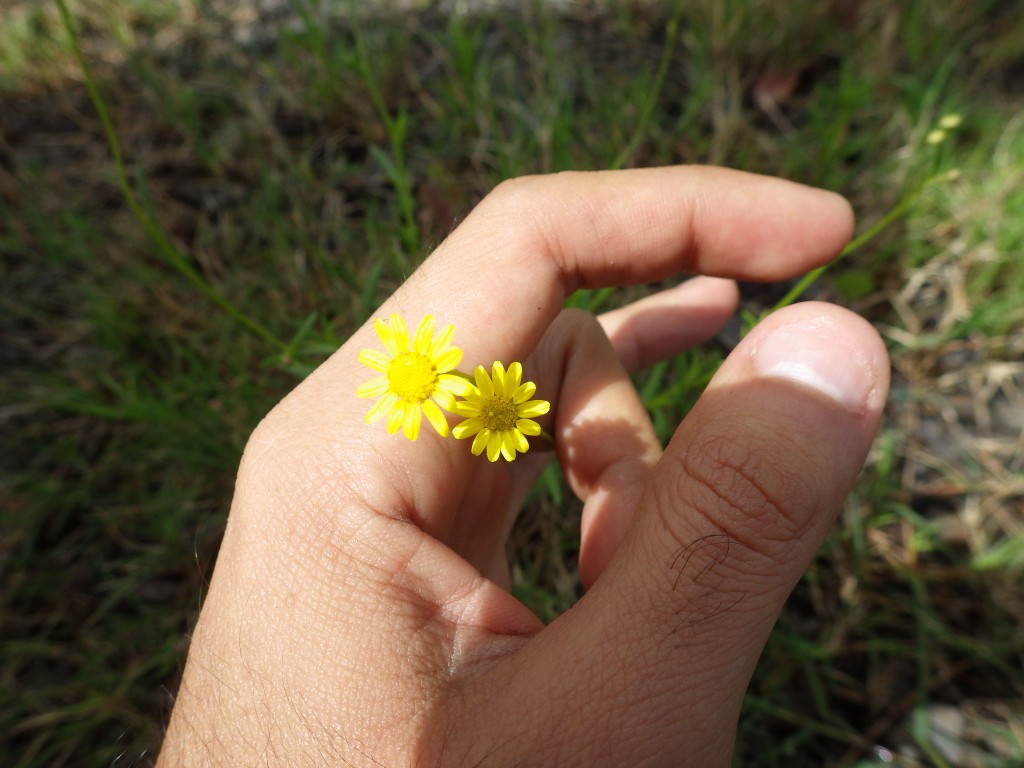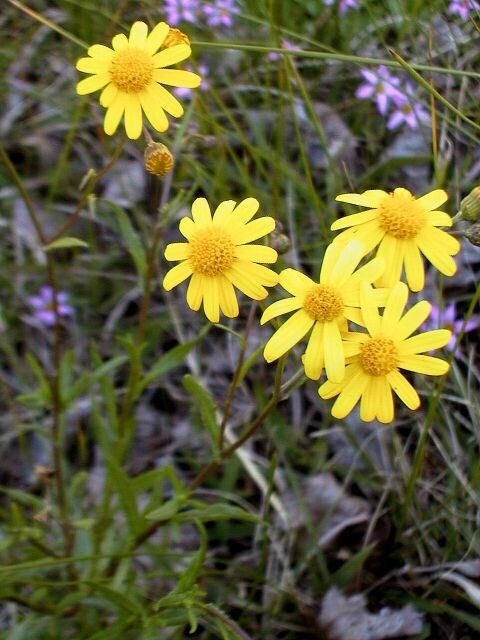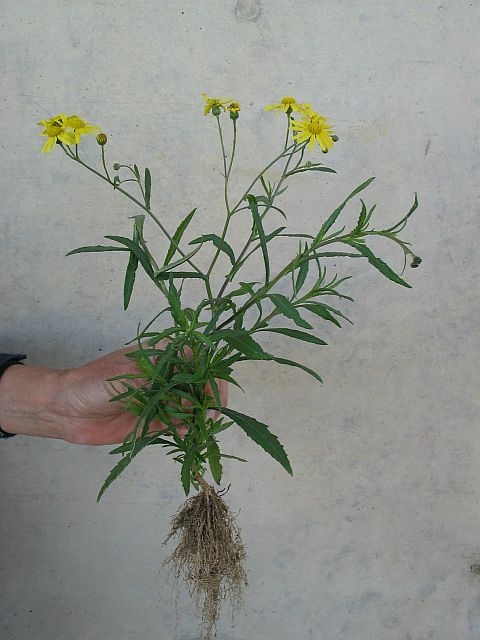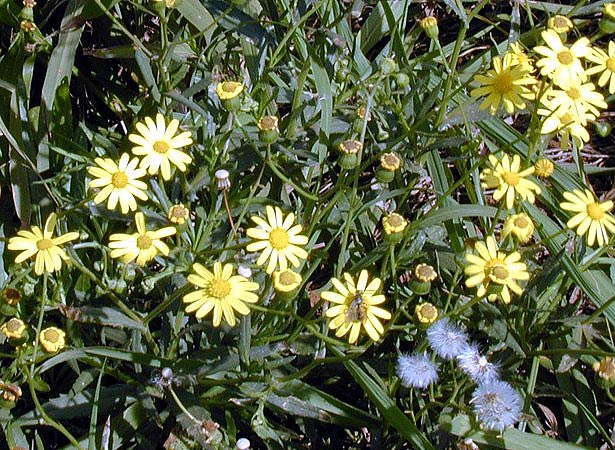Do NOT pull or cut down the plant. OISC will properly remove and dispose of the plant to prevent spreading seeds and re-sprouting. Please report fireweed to OISC. Send photo and location to oisc@hawaii.edu or text 808-286-4616. You can also call our office at 266-7994.
Fireweed (Senecio madagascariensis)
Family: Asteraceae
Fireweed is highly invasive and is on the Hawaii State Noxious Weed List making it illegal to sell or transport within the state of Hawai’i. Fireweed is native to Madagascar and South Africa, but is now present in Australia, Japan and Hawai’i. It was first detected in the state on Hawai’i Island in the early 1980s and is now widespread on the island. Maui, Kaua’i, O’ahu and Lana’i also have populations of fireweed. The known infestations on Kaua’i are located in hydro-mulched areas and are being controlled by Kaua’i Invasive Species Committee and the Hawai’i Department of Agriculture.
Fireweed seeds are easily dispersed by wind, water, and by infested equipment and material that contain seeds. Common materials that can be contaminated with fireweed seeds include; hydro-mulch, construction and farming equipment, and earth materials. Proper decontamination of equipment and materials is essential to prevent the spread of fireweed between the islands.
Description:
- Daisy-like herb that grows upright and branched, up to 50 cm (20 in) high.
- Yellow flowers each have 13 petals and look like small daisies about the size of a nickel.
- Flowers mature into white thistle balls
- Native to Madagascar, introduction history in Hawaii unknown. Discovered in the early 1980s in pastures in Kohala on the Big Island, New populations introduced to Kaua’i and O’ahu in contaminated hydromulch (groundcover seeds) from Australia, where it is also invasive
Harm:
- Each flower can produce 150 seeds, each plant can produce 30,000 seeds per year that spread by wind, hiking boots, vehicles or by animals when moved from infested to non-infested areas
- Invades pastures, disturbed areas and roadsides
- Toxic to livestock when eaten, it causes slow growth, illness, liver-malfunction and even death in severe cases.
- One of the top 10 weeds of Western Australia where costs to the cattle industry and the Australian government exceed $2 million per year
- Report fireweed to OISC by calling 266-7994 or email oisc@hawaii.edu or call 643-PEST
On O’ahu:
Historically there have been several populations ranging from Kunia to Mānoa, these populations have since been removed and are monitored by HDOA, OISC, and O’ahu Army Natural Resources Program. However in February 2014, a new infestation of fireweed was detected in the Keamanea watershed on the north shore. OISC treated the infestation and no new plants have been seen since December 2014. OISC continues to monitor the area as we are close to yet another island-wide eradication of fireweed.
